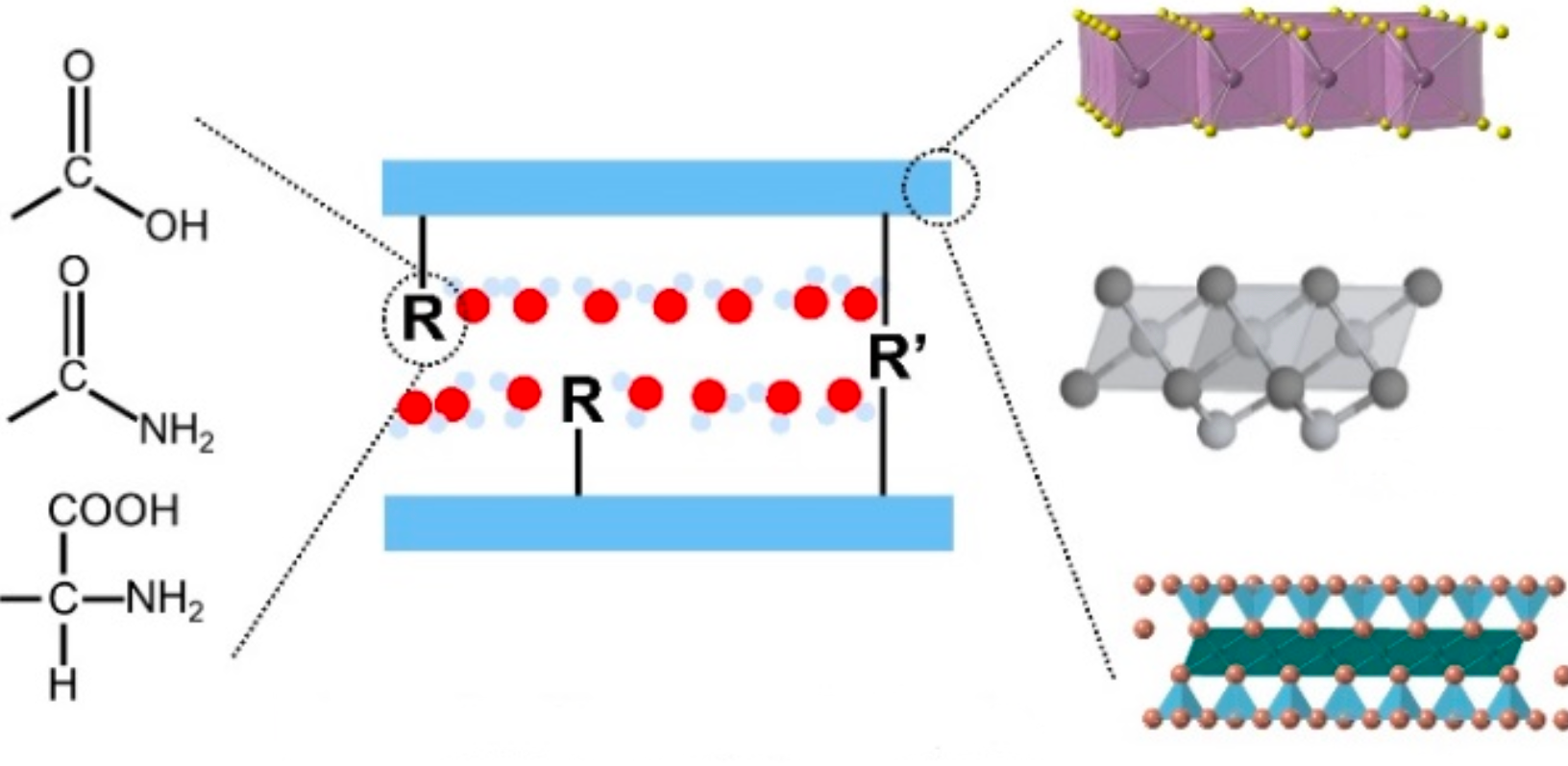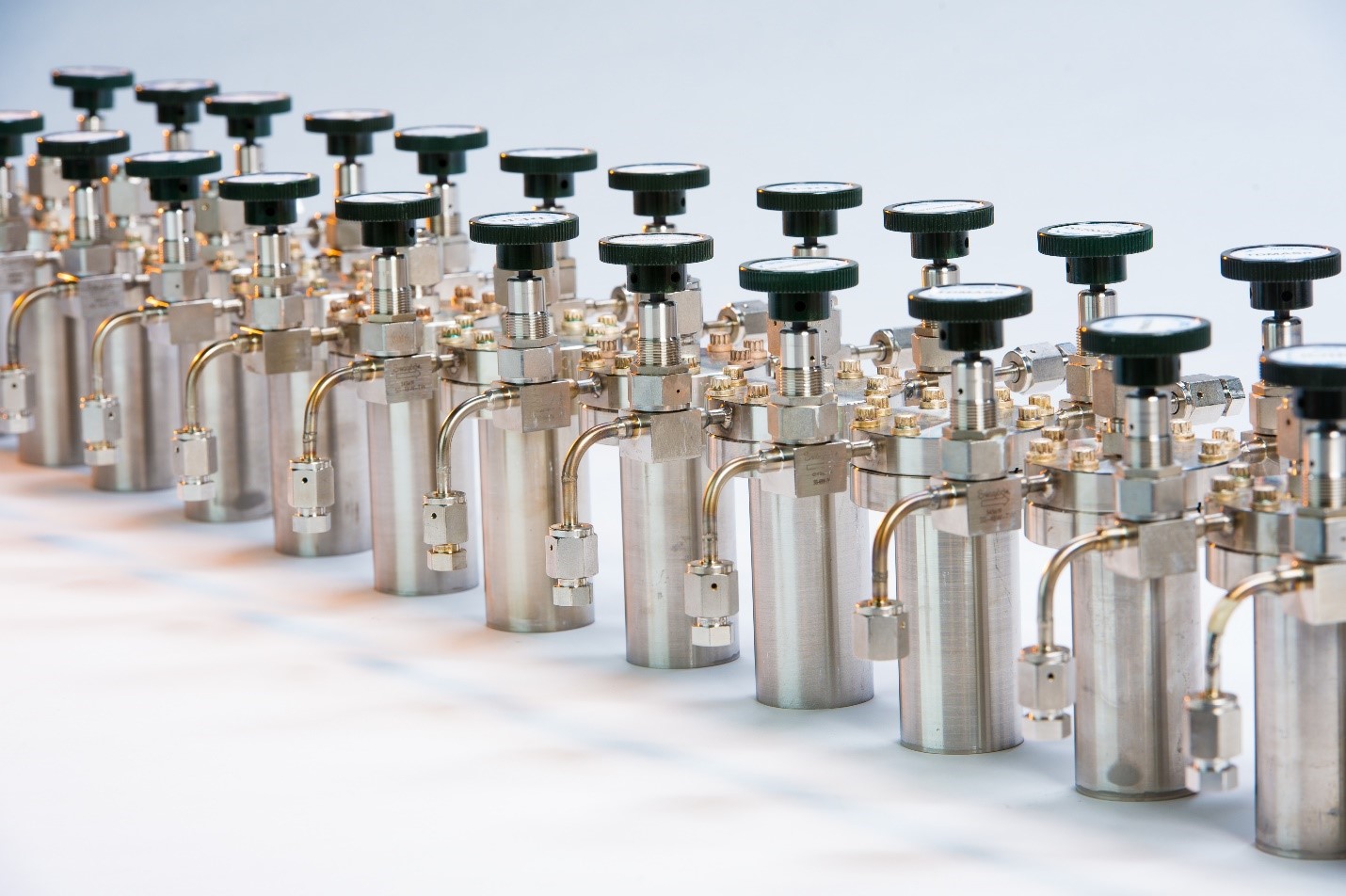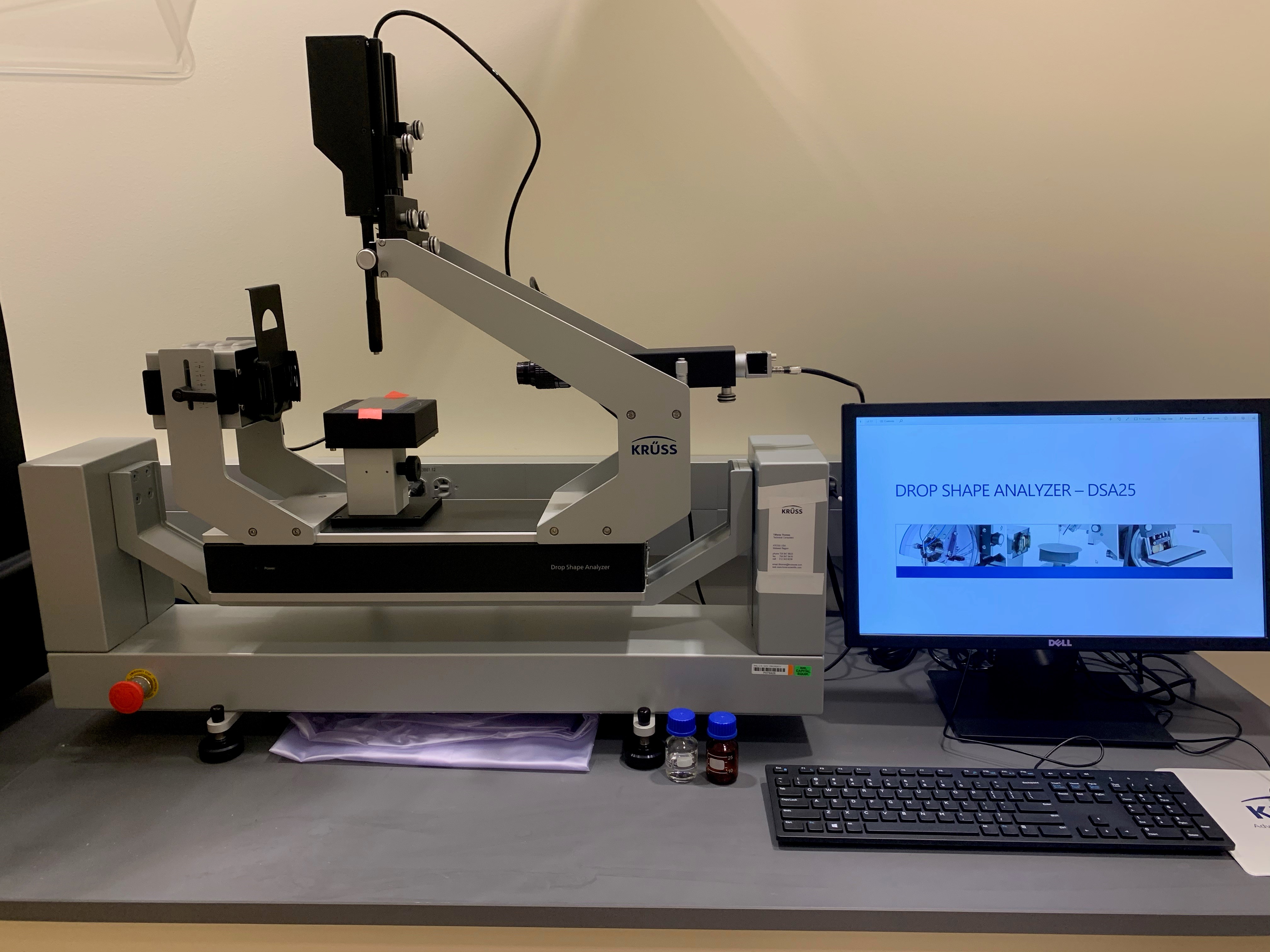Thrust Leader: Chong Liu
Thrust Deputy Leader: George Schatz
Principal Investigators: Seth Darling, Juan de Pablo, Jeff Elam, Kelsey Hatzell, Paul Nealey, Dimitri Talapin, Matthew Tirrell, Nestor Zaluzec
In Thrust 1, we aim to uncover the principles governing selective adsorption and transport of different target solutes. Biological ion channels can transport specific ions with high selectivity and speed. However, we still do not have the capability to predictively design a synthetic channel with excellent selectivity for any desired target ion or molecule of interest. Therefore, we will use synthetic strategies to create a platform of 2D channels with tunable dimensions and surface chemistries to understand, control, and predict the transport of ions and small molecules.
The transport mechanism of nanoparticles and macromolecules remains unclear due to the large parameter space, including the size, geometry, and chemistry of the nanoparticles/macromolecules. We propose to take advantage of our precise synthesis of nanoparticles and precise assembly and modification of isoporous membranes to study the transport of nanoparticles/macro-molecules to realize the selective separation of nanoparticles and macromolecules.
Equipment/ Tools
Array of “bubblers” containing chemical precursors used in atomic layer deposition
- Atomic layer deposition (ALD) is a highly controlled method for depositing precise thin films to a desired thickness onto a substrate.
- ALD enables the “growth” of differing multilayer structures.
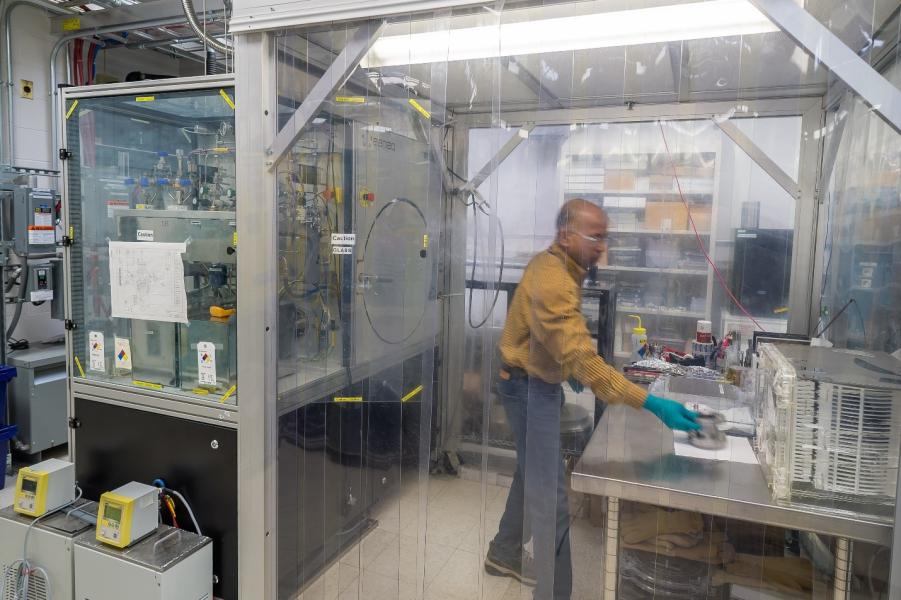
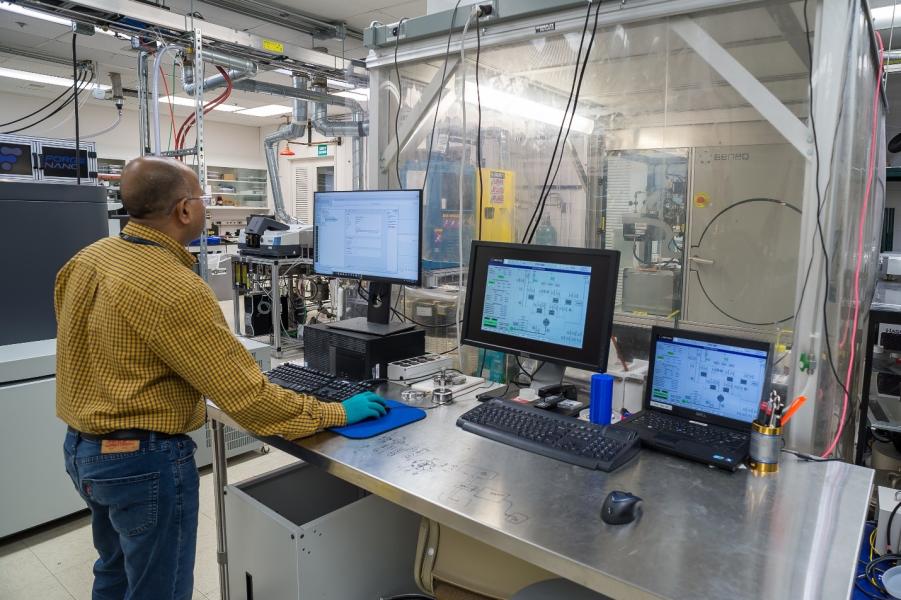
Atomic layer deposition reactor (Beneq model TFS 500)
- Enables users to deposit simple binary oxides, metals, and complex nanocomposites in a well-controlled manner.
- Capable of depositing large 300mm wafers/objects.
Drop shape analyzer – DSA25
- Designed for determining the wettability of solids my means of the contact angle as well as the surface tension of liquids.
- Quick and versatile dosing for surface-free energy and surface tension.
- High-resolution camera and high-quality zoom lens for accurate display of the drop with optimum size lead to a precisely measured contact angle or surface tension.
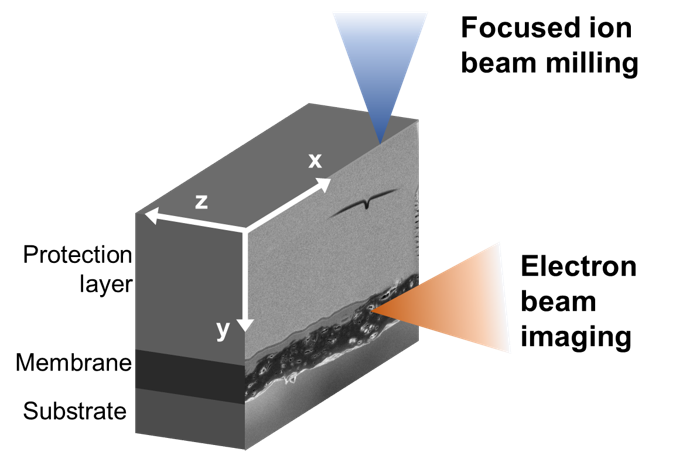
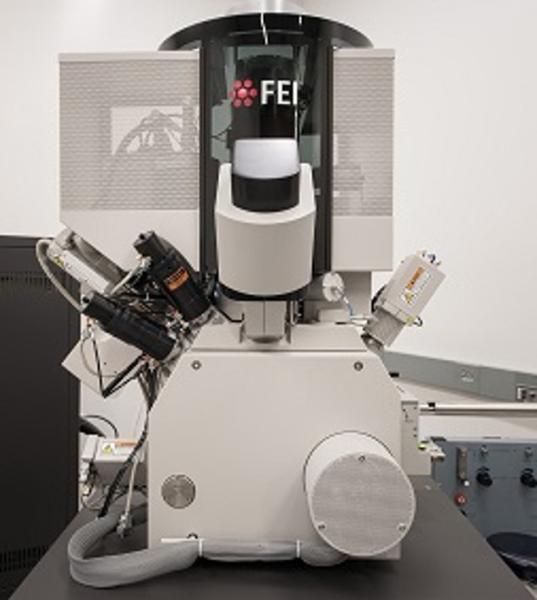
Focused-ion-beam scanning electron microscope
- FIB-SEM is used to produce 2D and 3D images of surface topography and is able to resolve nm-scale features.
- AMEWS researchers use auto slice-and-view software to obtain the 3D structure of materials.
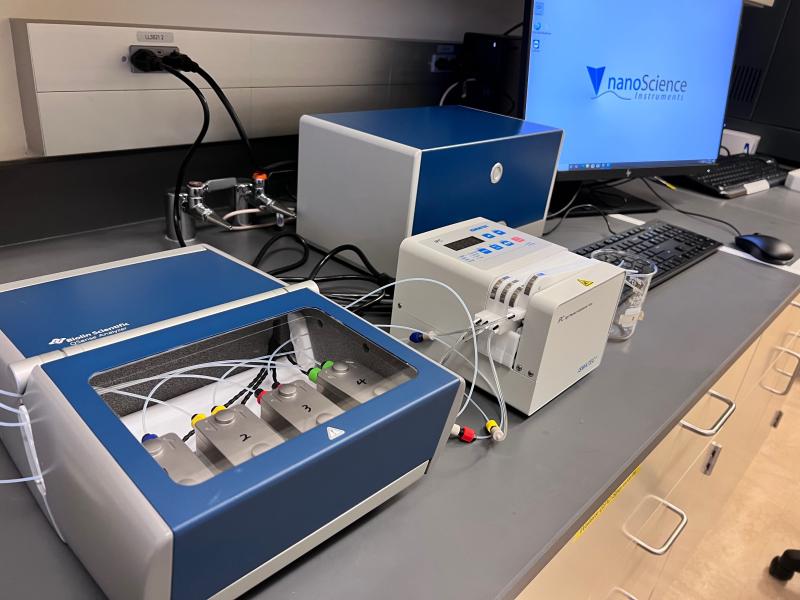
QSense Analyzer
- Four-channel QCM-D system that provides high-quality data with low drift from four temperature-controlled channels in parallel.
- Measures multiple harmonics to:
- Enable quantification of changes in mass or viscoelastic properties of soft layers
- Distinguish changes in layer thickness from changes in viscoelastic properties
- The tool is a good fit for testing and comparing different samples at the same time. In addition to the high throughput, it delivers trustworthy results in a broad range of measurement conditions and can be complemented with accessory modules to expand the capabilities even further.
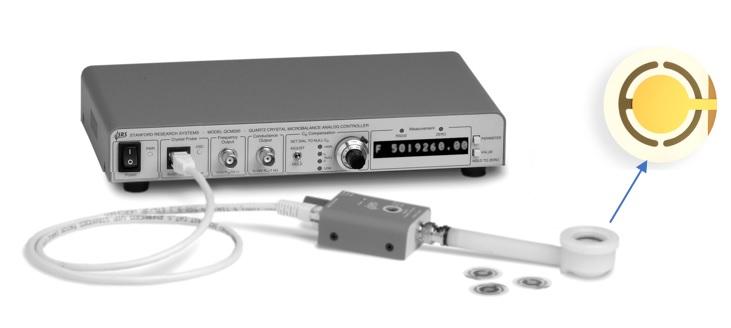
SRS QCM200 quartz crystal microbalance
- Quartz crystal microbalance with dissipative monitoring combines real-time adsorption and desorption measurements in a liquid-phase environment. The QCM is sensitive to sub-monolayer mass changes and can measure viscosity and mechanical properties of adsorbed materials.
- The technique is used by AMEWS researchers to monitor both the synthesis and adsorption-desorption characteristics of model surfaces. The technique yields chemisorption rates of functional molecules and corresponding activation energies, which are then used in comparison with simulations and theory.
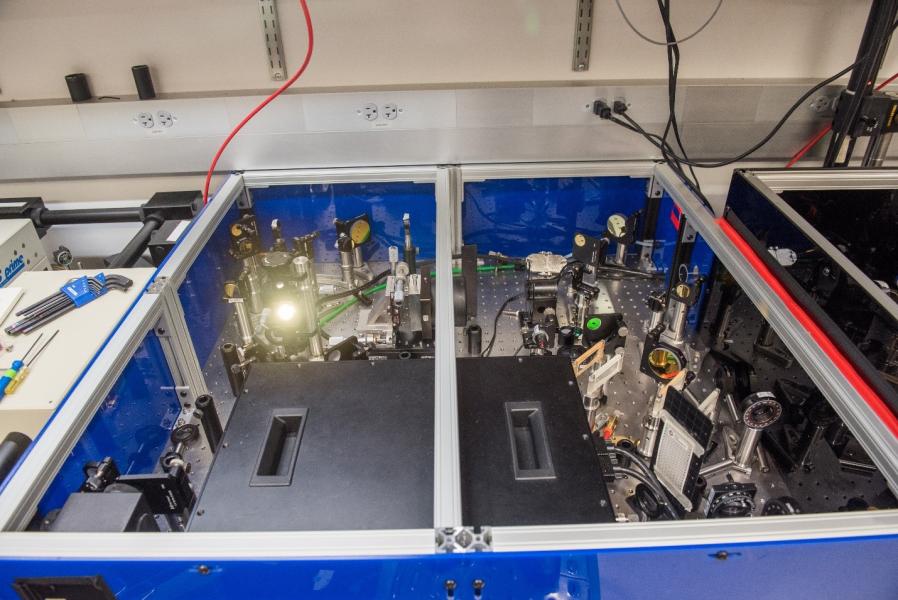
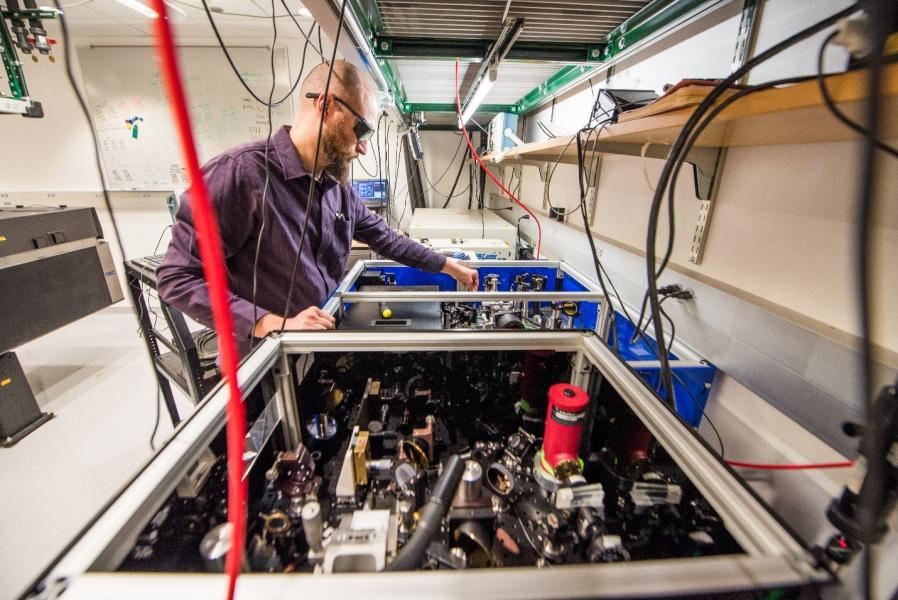
2D IR spectrometer
- Ultrafast 2D IR spectrometer designed for use in transmission for bulk systems and attenuated total internal reflection.
- Allows measurements of solvation dynamics, orientational diffusion of molecules in solution, and vibrational coupling and anharmonicity.
- Specifically designed to allow measurement of difficult, highly scattering samples and solid-liquid interfaces.
